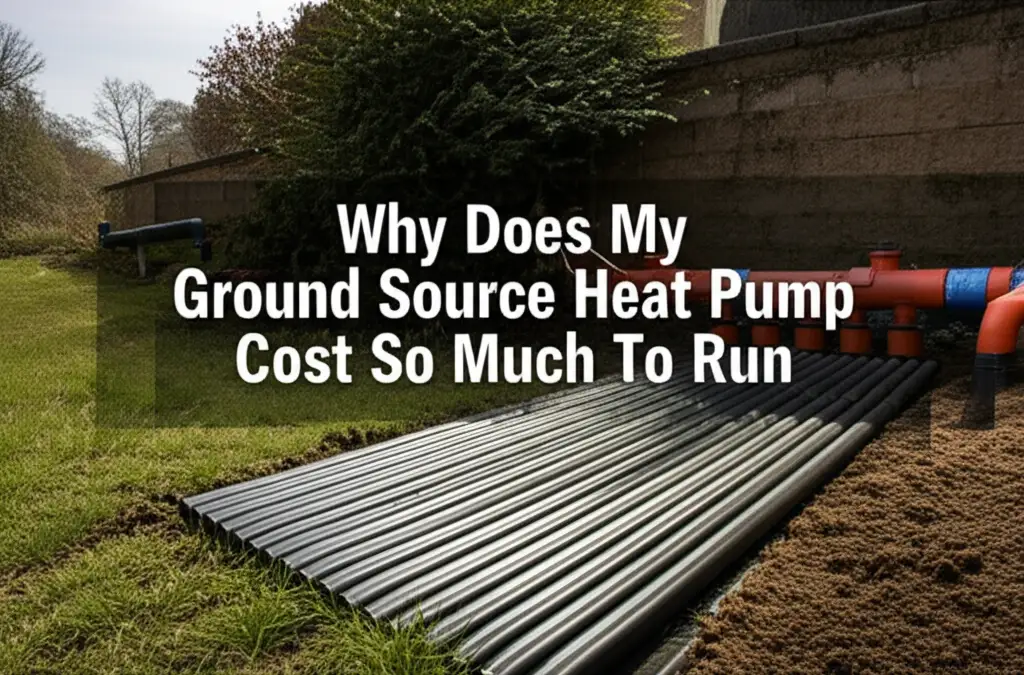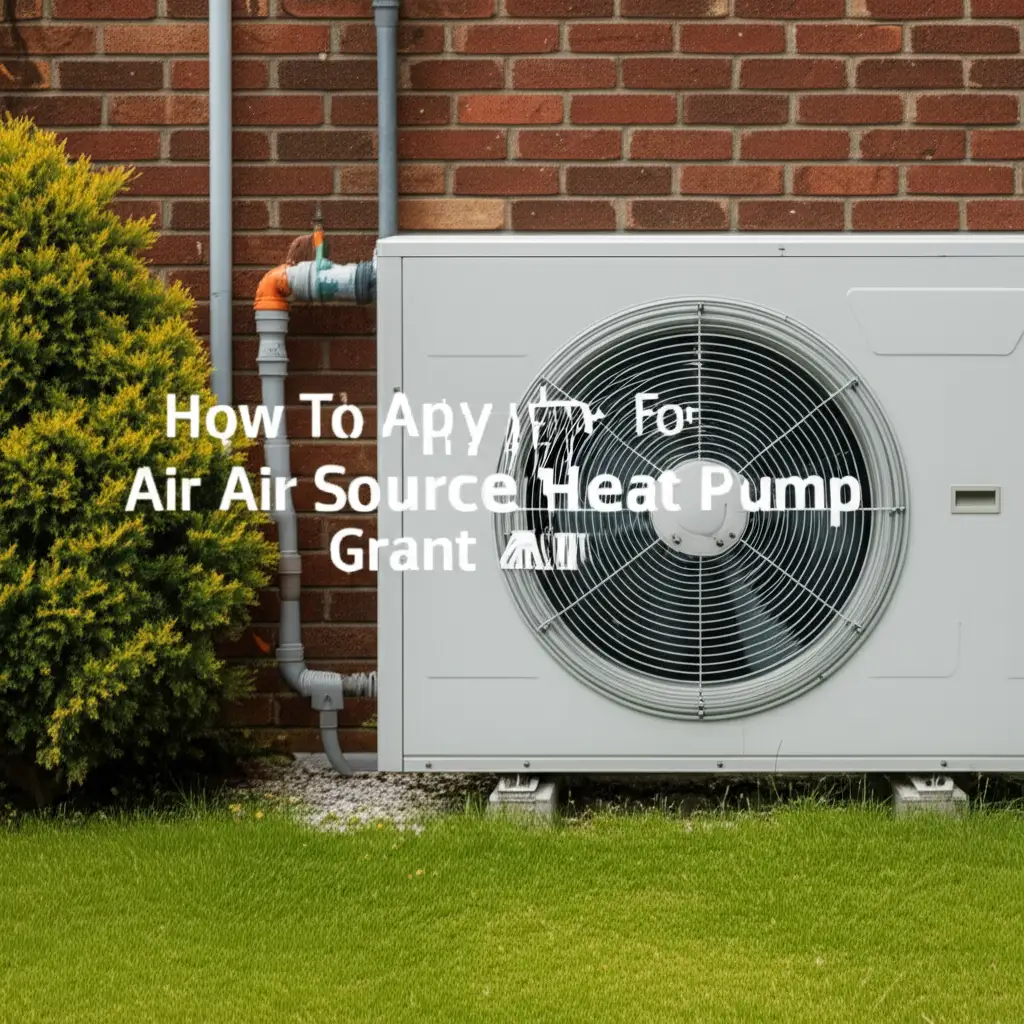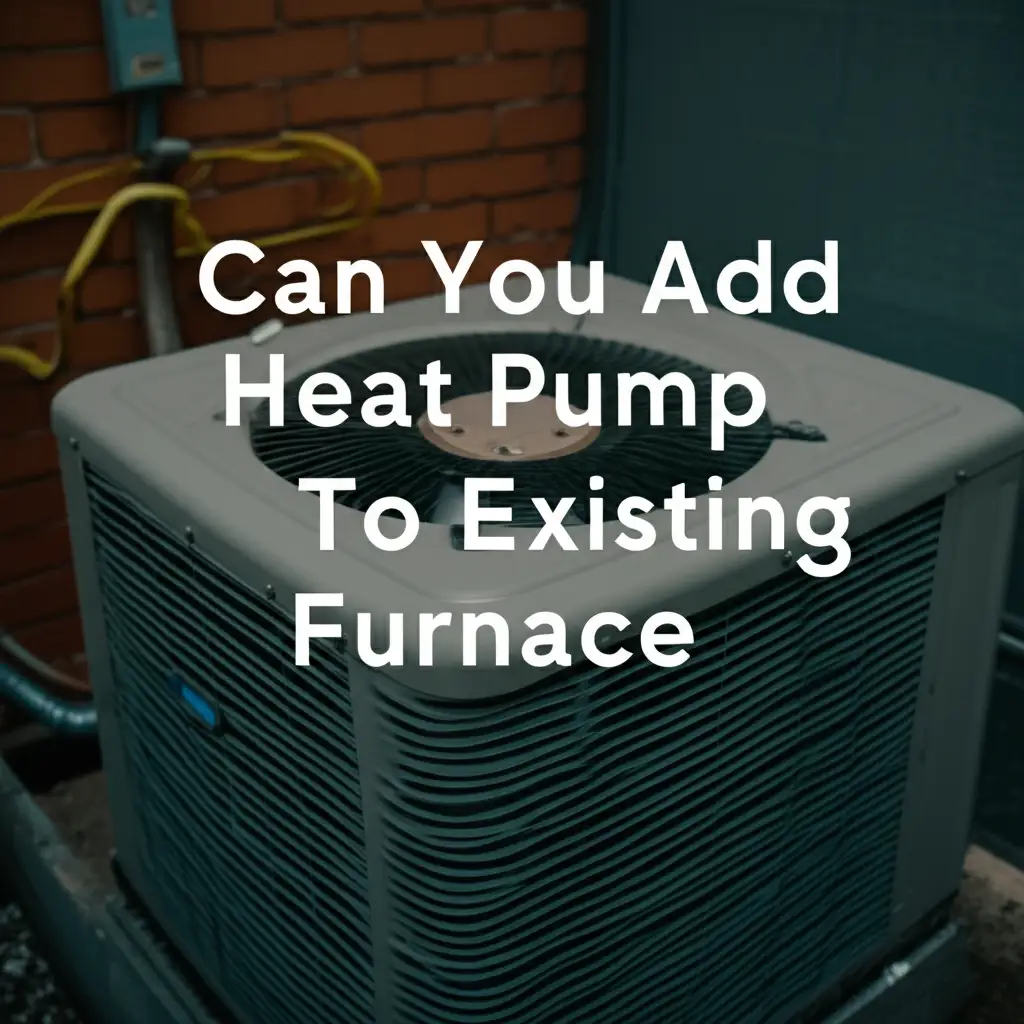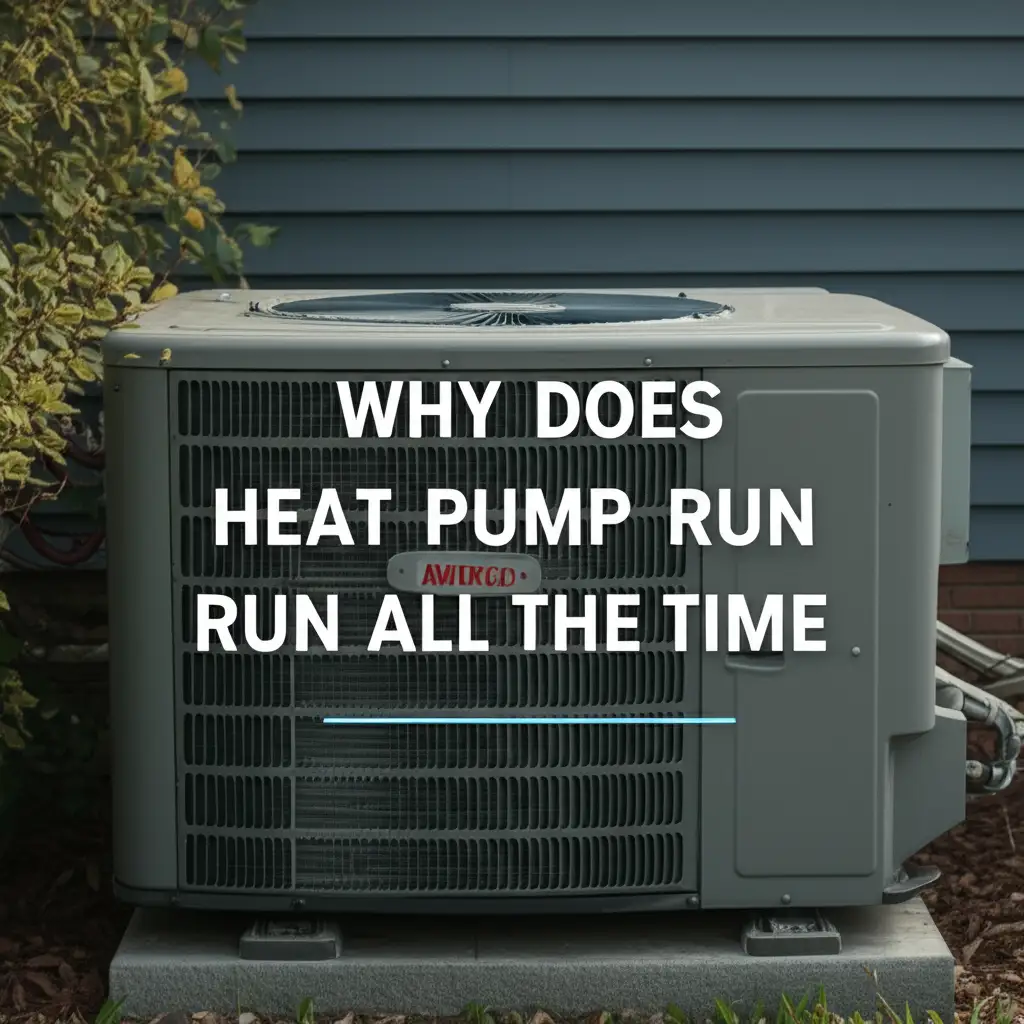· Todd Martin · Home Energy · 18 min read
How Much Electricity Does An Inverter Heat Pump Use
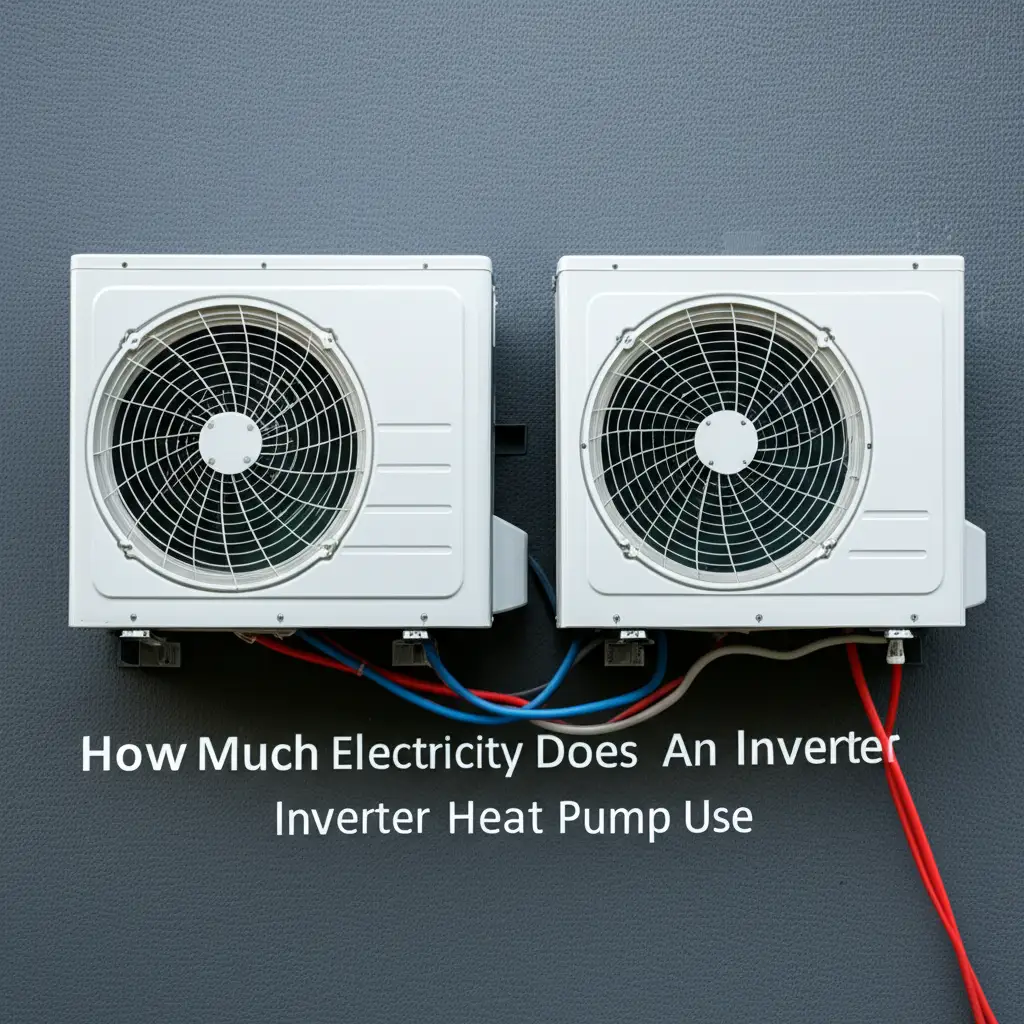
Understanding Inverter Heat Pump Electricity Use
Do you often wonder about the energy consumption of your home appliances? As a homeowner, I know you want to keep your utility bills low. You may also want a comfortable living space year-round. An inverter heat pump promises both efficiency and comfort. This type of heating and cooling system is a significant upgrade for many homes.
Many people ask, “How much electricity does an inverter heat pump use?” This question is important for budgeting and environmental reasons. Inverter heat pumps use advanced technology to save energy. They differ greatly from older, single-speed systems. This article explores the factors influencing an inverter heat pump’s electricity usage. We will examine how they work. We will also discuss how they compare to other systems. Finally, we will provide tips to optimize their performance. By the end, you will understand how to maximize your savings.
Takeaway
- Inverter heat pumps typically use 30-50% less electricity than traditional fixed-speed systems due to their variable-speed compressor technology.
- Actual electricity usage depends on various factors. These include climate, home insulation, system sizing, and efficiency ratings.
- Proper installation, regular maintenance, and smart thermostat use significantly reduce energy consumption.
- Understanding efficiency ratings like SEER, HSPF, and COP helps in selecting and optimizing your inverter heat pump.
- Investing in home weatherization and air sealing enhances the heat pump’s efficiency and lowers bills.
How Much Electricity Does An Inverter Heat Pump Use?
An inverter heat pump typically uses 30-50% less electricity than traditional HVAC systems due to its variable-speed compressor. Actual consumption varies based on climate, home insulation, system efficiency ratings (SEER, HSPF), and user habits, but they are a highly energy-efficient choice for heating and cooling.
What Makes Inverter Heat Pumps Different?
When thinking about home heating and cooling, you might have heard of inverter technology. This technology sets modern heat pumps apart from older models. Traditional heat pumps and air conditioners use single-speed compressors. These compressors are either fully on or fully off. They run at maximum capacity until your home reaches the set temperature. Then they shut down completely. This on-off cycle leads to more energy use. It also creates temperature swings inside your home.
Inverter heat pumps use a variable-speed compressor. This compressor does not just turn on and off. Instead, it adjusts its speed and output to meet your home’s exact heating or cooling needs. If your home only needs a little cooling, the compressor runs at a low speed. If it needs more, the compressor speeds up. This continuous, modulated operation is much more efficient. It avoids the energy spikes associated with starting and stopping. This approach leads to lower electricity bills and consistent comfort.
The benefits of this variable speed operation are clear. First, you get incredibly precise temperature control. The system maintains your desired temperature with minimal fluctuations. This creates a more comfortable environment. Second, energy savings are substantial. The compressor runs at the lowest necessary speed. This means it consumes only the electricity required. It never wastes energy by overworking. Third, these systems often operate more quietly. They avoid the loud sudden starts and stops of fixed-speed units. Understanding how these systems work helps explain their lower electricity usage. For more details on how this technology applies to cooling, you can learn about how much electricity an inverter air conditioner uses.
Key Factors Affecting Inverter Heat Pump Electricity Use
The amount of electricity your inverter heat pump uses is not a fixed number. Many elements influence its energy consumption. Understanding these factors helps you manage your home’s energy use. It also helps you identify areas for potential savings.
Climate and Outdoor Temperature
The climate where you live is a major factor. Heat pumps move heat from one place to another. In heating mode, they extract heat from the outside air. In cooling mode, they move heat from inside your home to the outside. The greater the temperature difference, the harder the heat pump works. For example, if it is very cold outside, the heat pump needs more energy to extract enough heat. Similarly, in very hot climates, it takes more energy to reject heat. While inverter heat pumps perform well in a wide range of temperatures, extreme conditions increase their electricity consumption.
Home Insulation and Air Sealing
Your home’s envelope plays a crucial role. Good insulation in walls, attics, and floors prevents heat transfer. Proper air sealing stops drafts and air leaks. A well-insulated and sealed home keeps conditioned air inside. This reduces the workload on your heat pump. If your home has poor insulation, heat escapes in winter. Heat enters in summer. The heat pump runs longer and uses more electricity to maintain the set temperature. Improving your home’s insulation is one of the most effective ways to lower your energy bills.
System Size and Sizing
The size of your inverter heat pump matters greatly. An undersized system works too hard to heat or cool your home. It runs almost constantly and may never reach the desired temperature. This leads to high electricity use and discomfort. Conversely, an oversized system cycles on and off too frequently. This is inefficient, as starting up uses more energy. It also causes uneven temperatures and poor dehumidification. A professional HVAC technician determines the correct size for your home. They consider square footage, ceiling height, window types, and local climate. Correct sizing ensures optimal efficiency and comfort.
Efficiency Ratings (SEER, HSPF, COP)
Heat pumps come with efficiency ratings. SEER (Seasonal Energy Efficiency Ratio) measures cooling efficiency. HSPF (Heating Seasonal Performance Factor) measures heating efficiency. COP (Coefficient of Performance) indicates overall efficiency. Higher ratings mean the system converts electricity into heating or cooling more efficiently. An inverter heat pump with a high SEER and HSPF rating will use less electricity than a lower-rated model. Investing in a highly efficient unit saves you money in the long run.
User Habits and Thermostat Settings
How you use your heat pump directly impacts its energy consumption. Setting your thermostat to extreme temperatures makes the unit work harder. Constantly adjusting the temperature also increases electricity use. Instead, find a comfortable temperature and stick with it. Using a programmable or smart thermostat helps manage settings. You can schedule temperature adjustments when you are away or sleeping. This avoids unnecessary heating or cooling. Even small temperature changes can lead to noticeable savings over time.
Maintenance
Regular maintenance ensures your inverter heat pump runs at peak efficiency. Dirty filters restrict airflow. This forces the unit to work harder. Dirty coils reduce the system’s ability to transfer heat. Low refrigerant levels also hinder performance. Schedule annual professional tune-ups. Clean or replace air filters monthly or as recommended. These simple steps keep your system running smoothly. They prevent excess electricity consumption. Neglecting maintenance can significantly increase your heat pump’s operating costs.
Ductwork Integrity
Your home’s ductwork carries conditioned air throughout the house. Leaky or uninsulated ducts can lose a significant amount of heated or cooled air. Ducts located in unconditioned spaces like attics or crawl spaces are particularly prone to energy loss. Sealing duct leaks and insulating ducts in unconditioned areas ensures that more conditioned air reaches its destination. This reduces the energy wasted by your inverter heat pump. It helps to keep your system from running longer than needed.
Calculating Inverter Heat Pump Energy Consumption
Understanding how to estimate your inverter heat pump’s electricity usage can help you budget. It also lets you see the impact of energy-saving efforts. While precise figures vary, you can make good estimates based on key metrics. The main unit for measuring electricity usage is the kilowatt-hour (kWh). Your electricity bill shows your consumption in kWh.
To estimate daily or monthly kWh usage, you need a few pieces of information. First, know your heat pump’s heating or cooling capacity. This is often measured in BTUs (British Thermal Units) or tons. For example, a 3-ton heat pump provides 36,000 BTUs per hour. Second, you need the system’s efficiency rating. For heating, this is HSPF (Heating Seasonal Performance Factor). For cooling, it is SEER (Seasonal Energy Efficiency Ratio). These ratings indicate how efficiently the unit converts electricity into heating or cooling output. A higher rating means better efficiency.
Let’s consider an example for heating. A typical 3-ton (36,000 BTU/hour) inverter heat pump might have an HSPF of 10. This means for every watt of electricity it consumes, it provides 10 units of heat. To roughly estimate usage, you can divide the total BTU load your home needs by the HSPF. Then convert that to kWh. Realistically, calculating exactly how many kWh an air source heat pump uses can be complex. This is because factors like outdoor temperature and runtime vary constantly. However, knowing the HSPF or SEER helps you understand its potential efficiency.
You can also use a simpler approach. Estimate the average wattage of your heat pump when it’s running. Then multiply by the hours it runs per day. For instance, a 3-ton inverter heat pump might use between 1,000 to 3,000 watts when running. If it runs for 8 hours a day at an average of 1,500 watts (1.5 kW), that’s 12 kWh per day. Multiply that by 30 days for a monthly estimate: 360 kWh. Then multiply by your electricity rate (e.g., $0.15/kWh) to get the cost ($54 per month). This is a rough calculation. Actual usage changes with the weather and your thermostat settings. For more detailed insights into specific air source models, you might find information on how much energy an air source heat pump uses.
Remember, inverter heat pumps rarely run at full capacity all the time. They modulate their output. This is why their overall electricity consumption is lower than fixed-speed units. The variable speed helps them match the load precisely. This avoids unnecessary power draw. Monitoring your actual electricity bill is the best way to track your usage. Many smart thermostats also provide detailed energy consumption reports. These reports give you real-time data on your heat pump’s performance.
Comparing Inverter Heat Pumps to Other Systems
Understanding how much electricity an inverter heat pump uses gains context when compared to other heating and cooling systems. Their energy-saving advantages become very clear through such comparisons.
Inverter Heat Pump vs. Standard Air Conditioner
Standard air conditioners, like older heat pumps, use single-speed compressors. They are either fully on or fully off. When cooling, they run at full power until the thermostat’s set point is reached. Then they cycle off. This constant on-off cycling is less efficient. Each start-up draws a surge of electricity. Inverter heat pumps, by contrast, adjust their compressor speed. They run continuously at a lower, more efficient level. This modulation means they avoid those energy-intensive start-ups. They consume less electricity overall for the same cooling effect. This also provides more consistent temperatures. The difference in energy use can be substantial, often 30% or more in savings. You can explore a direct comparison to understand if a heat pump uses more electricity than an air conditioner in various scenarios.
Inverter Heat Pump vs. Furnace (Gas/Electric)
For heating, inverter heat pumps offer a compelling alternative to traditional furnaces. Gas furnaces burn fossil fuels. While efficient at converting fuel to heat, they still have emissions. Electric furnaces use resistance heating. This method converts electricity directly into heat. Resistance heating is 100% efficient at the point of use. However, it is very costly to operate. It consumes a large amount of electricity. Heat pumps, on the other hand, do not generate heat. They move it. They transfer existing heat from outside to inside your home (or vice-versa). For every unit of electricity consumed, an inverter heat pump can deliver 3 to 5 units of heat. This makes them significantly more efficient than electric resistance heating. They are often more cost-effective than gas furnaces, especially with rising natural gas prices.
Inverter Heat Pump vs. Ground Source Heat Pumps
Ground source heat pumps (GSHPs) are another highly efficient option. They use the stable temperature of the earth to provide heating and cooling. This makes them incredibly consistent performers. They are generally more efficient than air source heat pumps. This is because underground temperatures fluctuate less than air temperatures. However, GSHPs require extensive underground loop installation. This makes their initial installation cost much higher. Inverter air source heat pumps are more affordable to install. They offer a great balance of high efficiency and lower upfront costs. While they may not reach the same efficiency levels as GSHPs, they are still a top choice for energy savings. If you are curious, you can research how much electricity a ground source heat pump uses for a full comparison.
In summary, inverter heat pumps stand out for their ability to deliver comfort with significantly reduced electricity consumption. They surpass fixed-speed air conditioners in efficiency. They provide a much more cost-effective heating solution than electric furnaces. They offer a strong alternative to gas furnaces. While ground source heat pumps lead in efficiency, inverter air source models provide an excellent balance of performance and affordability.
Optimizing Your Inverter Heat Pump’s Electricity Usage
After investing in an inverter heat pump, you want to ensure it operates at its peak efficiency. Several strategies help minimize its electricity consumption. These tips extend the life of your unit and maximize your energy savings.
Proper Installation and Sizing
The journey to an efficient heat pump begins before it is even installed. Correct sizing is critical. An HVAC professional must perform a load calculation. This calculation considers your home’s square footage, insulation levels, window types, and local climate. An undersized unit runs constantly and cannot keep up. An oversized unit cycles on and off too frequently. Both scenarios waste electricity. Proper installation by certified technicians ensures the system is correctly charged with refrigerant. It also ensures proper ductwork connections. These details greatly impact efficiency. A well-installed and correctly sized system performs optimally. It avoids unnecessary energy drain.
Regular Maintenance
Just like a car, your heat pump needs regular care. Routine maintenance keeps your system clean and running smoothly.
- Air Filter Replacement: This is perhaps the easiest and most important task. A dirty air filter restricts airflow. It makes the heat pump work harder and use more electricity. Check your filter monthly and replace it every 1-3 months.
- Coil Cleaning: The outdoor coil can collect dirt and debris. This reduces its ability to transfer heat. Annually, have a professional clean the indoor and outdoor coils.
- Refrigerant Check: Proper refrigerant levels are vital for efficiency. Low refrigerant causes the unit to work harder. A professional technician can check and adjust levels.
- Professional Tune-ups: Schedule an annual check-up with an HVAC technician. They inspect electrical connections, fan motors, and overall system operation. They identify potential issues before they become costly problems. If you notice your heat pump using excessive electricity, it might be due to a lack of maintenance. Learn more about why your air source heat pump might be using so much electricity.
Smart Thermostat Use
A smart thermostat is an excellent tool for energy management. These thermostats learn your habits. They allow you to create schedules. They can even adjust temperatures based on whether you are home or away.
- Programming Schedules: Set different temperatures for different times of day. For instance, you can set a higher temperature in summer or lower in winter when no one is home.
- Geofencing: Some smart thermostats use your phone’s location. They turn the system down when you leave and back up before you return.
- Energy Reports: Many smart thermostats provide detailed energy usage reports. These reports help you understand when and how your heat pump uses electricity. This data helps you make informed adjustments.
Home Weatherization and Air Sealing
Your heat pump works to condition the air inside your home. If that conditioned air leaks out, or outside air leaks in, your system wastes energy.
- Insulation: Ensure your attic, walls, and floors have adequate insulation. This barrier prevents heat transfer.
- Window and Door Sealing: Check for drafts around windows and doors. Use caulk and weatherstripping to seal any gaps.
- Duct Sealing: Leaky ductwork can lose a lot of conditioned air. Have a professional inspect and seal your ducts, especially those in unconditioned spaces. These improvements create a tighter home envelope. This reduces the workload on your heat pump.
Setting Realistic Temperatures
Avoid setting your thermostat to extreme temperatures. Do not crank the AC down to 68°F in summer or the heat up to 75°F in winter. Each degree closer to the outdoor temperature saves energy. Aim for comfortable yet energy-efficient settings. A few degrees difference can significantly impact your electricity bill. For example, setting your thermostat just one degree higher in summer or one degree lower in winter can save you money. These strategies collectively help you maximize the efficiency of your inverter heat pump. They keep your energy bills as low as possible.
Understanding Heat Pump Efficiency Ratings: SEER, HSPF, and COP
When you are looking at inverter heat pumps, you will come across specific ratings. These ratings tell you how efficient the unit is. Understanding them helps you make an informed decision. They directly relate to how much electricity an inverter heat pump uses.
SEER: Seasonal Energy Efficiency Ratio (Cooling)
SEER measures the cooling efficiency of an air conditioner or heat pump. It calculates the total cooling output during a typical cooling season divided by the total electric energy input during the same period. A higher SEER rating means greater cooling efficiency. For example, a system with a SEER of 18 is more efficient than one with a SEER of 14. Modern heat pumps often have SEER ratings ranging from 15 to 22 or even higher. Inverter heat pumps generally have higher SEER ratings. This is because their variable-speed compressors can precisely match cooling demand. This avoids the on-off cycling of less efficient units. A higher SEER directly translates into lower electricity bills during the cooling season.
HSPF: Heating Seasonal Performance Factor (Heating)
HSPF measures the heating efficiency of a heat pump. It calculates the total heating output during a typical heating season divided by the total electric energy input during the same period. Like SEER, a higher HSPF indicates better heating efficiency. For instance, an HSPF of 10 is better than an HSPF of 8. Inverter heat pumps often boast HSPF ratings of 8.5 to 13 or more. This high efficiency in heating makes them a cost-effective alternative to traditional furnaces. The higher the HSPF, the less electricity your heat pump needs to keep your home warm during colder months.
COP: Coefficient of Performance (Overall Performance)
COP is a universal measure of efficiency for heat pumps. It is a ratio of the heating or cooling output to the electrical input at a specific operating condition. For example, a COP of 3 means the heat pump delivers 3 units of heat energy for every 1 unit of electrical energy consumed. Unlike SEER and HSPF, which are seasonal averages, COP is typically given for specific temperatures (e.g., at 47°F or 17°F for heating). A heat pump with a higher COP is more efficient. This metric is valuable for comparing systems across different operating conditions. It gives a direct indication of how well the heat pump converts electricity into usable heat or cooling.
What to Look for When Buying
When choosing an inverter heat pump, consider its SEER, HSPF, and COP ratings. Look for units that meet or exceed ENERGY STAR qualifications. These products are certified to be more energy-efficient than minimum federal standards. While systems with higher ratings often have a higher upfront cost, their operational savings can quickly pay for the difference. These units use less electricity, which means lower utility bills year after year. Understanding these ratings helps you invest in a system that performs efficiently and saves you money on electricity.
Common Misconceptions About Inverter Heat Pump Electricity Bills
Many people hold certain beliefs about heat pumps and their electricity usage. These beliefs can sometimes lead to confusion or surprise when they see their energy bills. Let’s address some common misconceptions.
Misconception 1: “Heat Pumps Always Use Auxiliary Heat”
One common worry is that heat pumps constantly rely on auxiliary or “backup” heat. Auxiliary heat is typically electric resistance heating. It uses a lot of electricity. It kicks in when the outdoor temperature drops very low. Inverter heat pumps are much better at providing heat at colder temperatures than older models. Their variable-speed compressors can extract heat efficiently even when it’s quite cold outside. This means they rely on auxiliary heat much less frequently. You will primarily see auxiliary heat activate during extreme cold snaps. It also activates if you set your thermostat very high, forcing a rapid temperature increase. Modern inverter heat pumps are designed to minimize auxiliary heat use, which keeps your bills lower.
Misconception 2: “Heat Pumps Don’t Work in Cold Climates”
This was true for older heat pump technology. Early heat pumps struggled to provide sufficient heat in very cold climates. However, inverter heat pump technology has changed this. Many modern inverter heat pumps, especially “cold climate” models, are designed to operate efficiently down to -13°F (-25°C) or even colder. They use enhanced vapor injection or other technologies to maintain heating capacity in low temperatures. While their efficiency (COP) does decrease as temperatures drop, they still remain a very effective and often more affordable heating option than electric resistance furnaces in cold regions. This improved performance means they can be a


